Turn ON the screen capture address on the PLC side to save the specified image from channel 1 as a still image on a CF card in JPEG format. Other than the CF card, you can also save to a USB storage device or FTP server.
-
In [System Settings], select [Image Unit].

If the [System Settings] tab is not displayed in the workspace, on the [View (V)] menu, point to [Workspace (W)], and then click [System Settings (S)].
In the [Image Input Module Settings], confirm whether [VM Unit 2000] or [VM Unit 3000] is selected.
Under [Video Control Start Address], select [Enable]. 42 Words from the setup address control the video display.
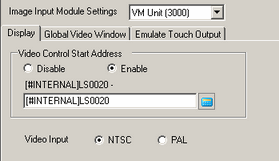
-
Specify the video control start address.
From [Video Input], select [NTSC]. (If the video signal is PAL, select [PAL].)
On the [Common Settings (R)] menu, select [Image Unit Window (U)] or click  to open the following dialog box. Select [New] and then specify [Number] and [Comment]. (For example, Number "1", Comment "Image Unit Window")
to open the following dialog box. Select [New] and then specify [Number] and [Comment]. (For example, Number "1", Comment "Image Unit Window")
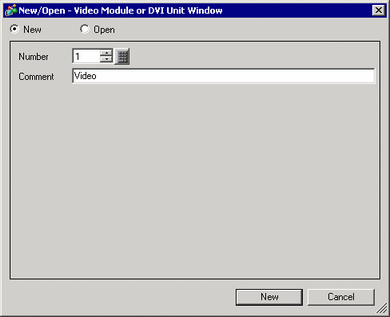
The video window [VM1] appears.
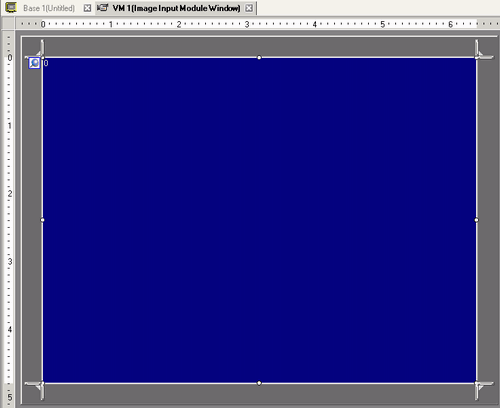
Adjust the [Image Unit Window] size.
To reduce the Window Screens, first reduce the display area (blue parts), then drag the  mark on the four corners to adjust the size. To enlarge, expand the window size and adjust the display area to fit the window size.
mark on the four corners to adjust the size. To enlarge, expand the window size and adjust the display area to fit the window size.
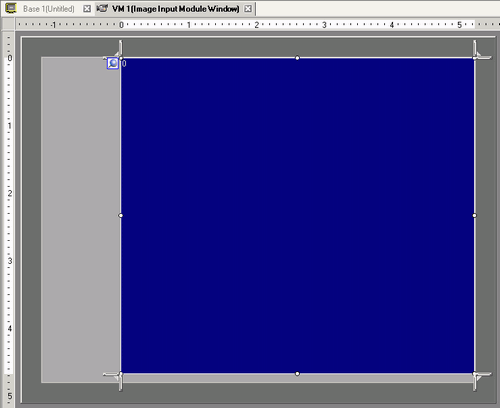
Double-click the blue display area. The following dialog box appears. In [Video Layout] click  .
.
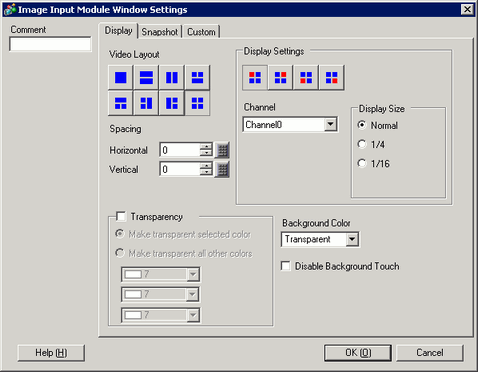
-
In the [Display] area, click  , and under the [Channel], select the camera image to be displayed in this upper left area (for example, Channel 0).
, and under the [Channel], select the camera image to be displayed in this upper left area (for example, Channel 0).
Also select the size of the image (for example, 1/4).
Similarly, select the channels and display sizes for the images displayed in the upper right, lower left, and lower right areas.

If the selected [Display Size] is larger than the display unit or the blue display area, the entire image will not display. You can use [Video Display position] on the [Custom Settings] tab to specify which part of the input image to be displayed. If you want to display the entire image, set the [Display Size] smaller than the size of the blue display area.
The display size varies depending on a type of display unit and display mode.
 27.12.2 Display Size - RGB Unit/DVI Unit
27.12.2 Display Size - RGB Unit/DVI Unit
Specify the values for the space between the screens. (For example, Horizontal 10, Vertical 10)
Click [OK] to finish and exit the [Image Unit Window] settings.
Open the [Snapshot] tab, and select the [Video capture] check box.

-
In the [Channel] list, select [Channel 0].

-
Under [JPG File Number], select [Direct], and specify the JPEG file number for the file you are creating.


Other than the CF card, you can also save to a USB storage device or FTP server.
In the system settings window, select [Display Unit] and click the [Mode] tab. From [Screen Capture], select the [Capture Action] check box. When you select the files saved in the FTP server, this setting is disabled.
Click [OK] to finish and exit the [Image Unit Window] settings.
On the [Parts (P)] menu, select [Image Unit Display (V)] or click  to place the [Image Unit Display] on the screen.
to place the [Image Unit Display] on the screen.
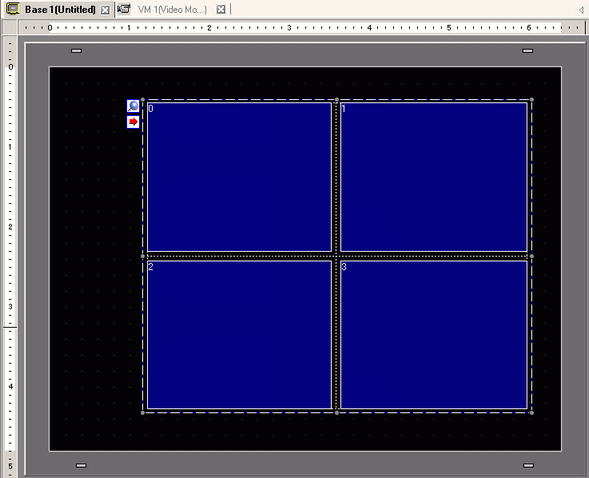
-
Double-click the [Image Unit Display]. The following dialog box appears.
In the [Video Layout] list, select [Always ON]. In the [Video Number] list, specify the video display number (for example, 1) and click [OK].
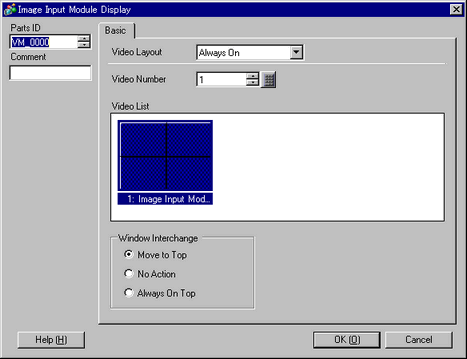
![]()
 27.9.7 Image Unit Settings
27.9.7 Image Unit Settings 27.9.5 Common (Image Unit Window) Settings
27.9.5 Common (Image Unit Window) Settings 27.9.8 Image Unit Display Settings Guide
27.9.8 Image Unit Display Settings Guide 8.6.1 Editing Parts
8.6.1 Editing Parts







